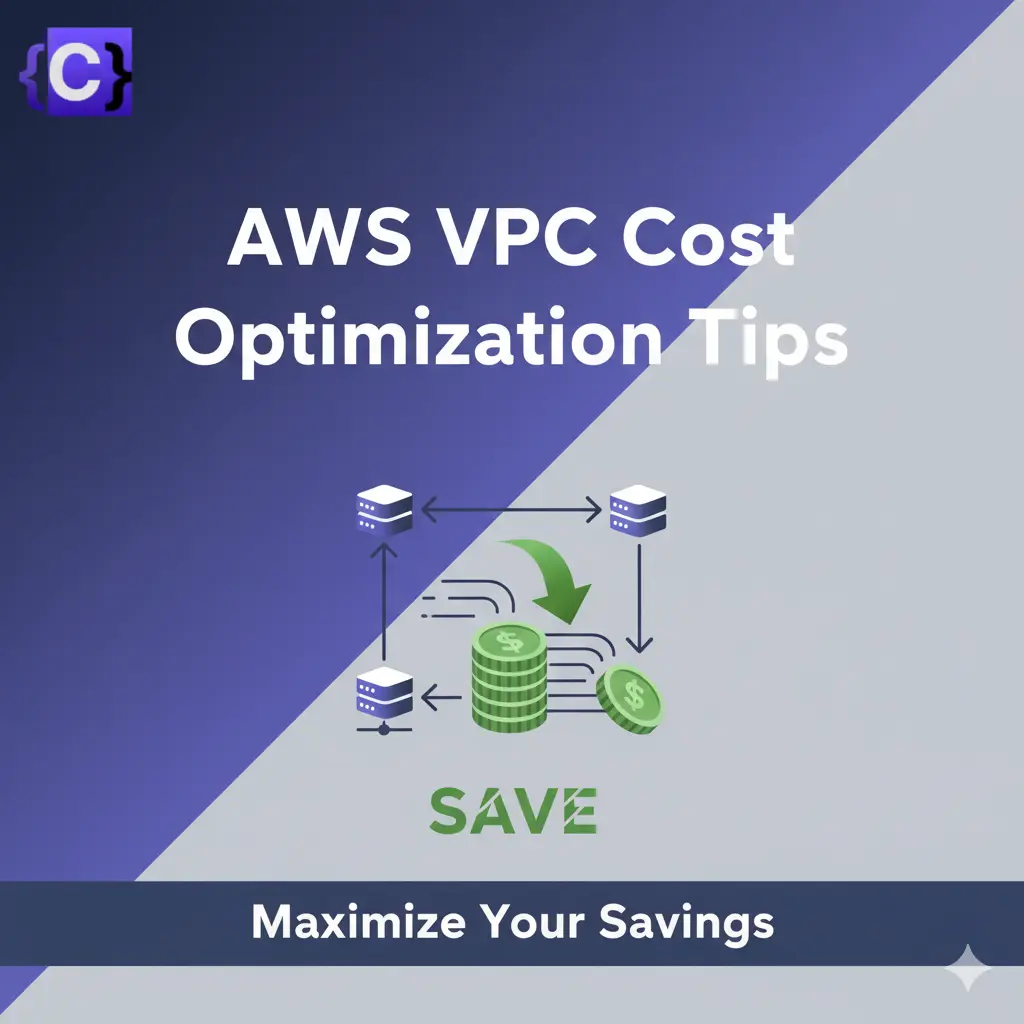Cloud computing has transformed how developers and businesses operate, offering impressive scalability, flexibility, and resource efficiency. Virtual Private Clouds (VPCs) are a key component of this shift, providing isolated network environments within public cloud infrastructures. These VPCs allow organizations to use cloud resources while maintaining control over their network setup, security policies, and data privacy. However, as businesses grow their cloud presence, costs can climb quickly due to over provisioned resources, inefficient network configurations, and poor instance choices.
Thankfully, there are many ways to optimize VPC costs without sacrificing performance or security. By making smart changes, companies can reduce their cloud spending and improve their overall cloud architecture at the same time. This article explores VPC cost optimization best practices and how you can streamline your cloud spending to maximize cloud ROI and build a more cost-effective cloud infrastructure.
What is VPC cost optimization?
VPC cost optimization is the process of managing and reducing expenses associated with your virtual private cloud resources (while still maintaining performance and security). It’s all about doing more with less.
This practice involves analyzing your cloud usage, identifying inefficiencies, and implementing cost-effective solutions across various components of your VPC.
Common components of VPC costs
Common areas for VPC cost optimization include:
- Resource allocation: Guaranteeing that your virtual machines, storage, and other cloud resources are appropriately sized for your workloads.
- Network design: Optimizing your VPC’s network architecture to minimize data transfer costs and improve performance.
- Instance management: Using the most cost-effective instance types and pricing models for your specific needs.
- Storage optimization: Choosing the right storage solutions and managing data lifecycle to reduce costs.
- Monitoring and analytics: Implementing monitoring tools to track resource usage and identify optimization opportunities.
VPC cost optimization reduces your overall cloud spending without sacrificing performance or functionality. It’s an ongoing process that requires regular evaluation and adjustment as your business needs evolve.
Benefits of optimizing your VPC costs
VPC cost optimization isn’t just about saving money (though, that’s a big part). It’s also about positioning your business for better scale, performance, and efficiency. Here are a few of the benefits of VPC cost optimization:
- Better resource allocation: Cost optimization forces you to analyze your resource usage and often leads to more efficient allocation and utilization of your cloud resources.
- Improved performance: Properly sized and optimized resources often lead to better application performance.
- Increased scalability: A lean, optimized infrastructure makes it easier to scale your applications up or down as needed (without unnecessary overhead).
- Greater business agility: Lower costs and more efficient resource use allow you to experiment with new ideas and pivot quickly without worrying about excessive cloud expenses.
- More accurate forecasting: As you gain a better understanding of your cloud costs, you’ll be able to more accurately predict and budget for future expenses.
- Competitive advantage: Lower operational costs can allow you to offer more competitive pricing for your products or services (or invest more in product development).
Reliable strategies for VPC cost optimization
Optimizing your VPC costs doesn’t need to be time-consuming or intimidating. Sometimes, just a handful of simple strategies can reduce your cloud spend. We’ll cover a few tried-and-true approaches to VPC cost optimization:
1. Right-size your resources
One of the most impactful ways to optimize VPC costs is to double-check that you’re using appropriately sized resources. Many organizations overestimate their needs and end up with underutilized (and overpriced) instances.
Regularly analyze your resource utilization and adjust your instance types and sizes. Use monitoring tools to track CPU, memory, and storage usage over time. Don’t hesitate to downsize instances that are consistently underutilized or upgrade those that are frequently maxed out.
2. Implement auto-scaling
Auto-scaling allows your infrastructure to automatically adjust to changing demand. Scaling resources up during peak times and down during lulls lets you optimize costs without sacrificing performance.
Set up auto-scaling groups for your applications, defining scaling policies based on cloud metrics like CPU utilization or request count. This helps guarantee you’re only paying for the resources you need at any given time.
3. Optimize network traffic
Data transfer costs can quickly add up, especially for bandwidth-intensive applications. Optimize your network architecture to minimize cross-region data transfer and reduce costs.
Consider using content delivery networks (CDNs) for static content, placing resources in the same region as your users, and using VPC peering or transit network gateways for inter-VPC communication.
4. Leverage reserved instances and savings plans
Some cloud providers offer significant discounts for committing to a certain level of usage. While this requires upfront planning, it can lead to substantial cost savings for predictable workloads.
Analyze your usage patterns and consider purchasing reserved instances or savings plans for your baseline capacity. Use on-demand or spot instances for variable workloads to maintain flexibility.
5. Implement tagging and monitoring
Proper resource tagging helps you understand and optimize your cloud costs. It allows you to attribute costs to specific projects, teams, or environments.
Implement a comprehensive tagging strategy and use cloud cost management tools to track spending across different categories. This visibility can help identify areas for optimization and maintain accountability across your organization.
6. Improve storage usage
Storage costs can impact your overall cloud spending. Implement a tiered storage strategy to balance performance and cost-effectiveness.
Use high-performance storage only for frequently accessed, critical data. Move less frequently accessed data to lower-cost storage tiers. Set up lifecycle policies to automatically transition data between tiers or delete unnecessary data. Regularly audit your storage to identify and remove unused or redundant data, orphaned snapshots, and outdated backups.
7. Use spot instances for non-critical workloads
Spot instances (or their equivalent in different cloud providers) provide major discounts compared to on-demand pricing—sometimes up to 90% less. While they can be terminated with short notice, they’re ideal for fault-tolerant, flexible workloads.
Consider using spot instances for batch processing jobs, development and testing environments, or as part of a hybrid approach with on-demand instances. Implement proper error handling and checkpointing in your applications to gracefully handle spot instance terminations.
8. Optimize database costs
Consider using managed database services to reduce operational overhead. Implement read replicas to offload read-heavy workloads from your primary database.
Use caching solutions like Redis or Memcached to reduce database load. For relational databases, optimize your queries and indexes to improve performance and potentially allow for smaller, less expensive instances.
Ready to simplify your database management and focus on building great apps?
Try DigitalOcean Managed Databases, offering popular options like MongoDB, PostgreSQL, and MySQL with easy setup and maintenance. With automatic daily backups, scalability, and enterprise-class performance starting at just $15 per month, you can leave the complexity of database administration to us while you concentrate on bringing your ideas to life.https://www.youtube.com/embed/31kGlD3HF6k
9. Implement VPC endpoints
VPC endpoints reduce data transfer costs and improve security by letting you privately connect your VPC to supported services without requiring an internet gateway, NAT gateways, or virtual private network (VPN) connection.
Implement VPC endpoints for services you frequently use, such as S3, DynamoDB, or your cloud provider’s API services. A VPC endpoint reduces your data transfer costs and decreases latency for requests to these services. Plus, VPC endpoints improve security by keeping traffic within your provider’s network instead of traversing the public internet.
10. Switch to a cloud provider with transparent pricing
Transparent pricing is crucial for effective cloud cost management, yet many providers obscure their true costs behind complex pricing models and hidden fees. By switching to a cloud provider that offers clear, straightforward pricing, you can better predict and control your cloud expenses. This transparency not only aids in budgeting but also allows for more accurate cost allocation across projects and departments.
Best practices for ongoing VPC cost management
Optimizing your VPC costs isn’t a one-time effort—it’s an ongoing process that requires regular attention and adjustment. Here are a few best practices that’ll help you control your VPC costs as your business scales:
- Regular cost audits: Schedule periodic reviews of your VPC costs, analyzing bills in detail and identifying opportunities for optimization based on usage patterns. This includes auditing IP address allocation to maintain efficient use and avoid unnecessary costs.
- Robust tagging strategy: Implement comprehensive resource tagging to accurately allocate costs to specific teams or projects and maintain visibility into your spending.
- Cost alerts and budgets: Set up proactive monitoring with alerts for when spending exceeds predefined thresholds and create budgets for different projects or departments.
- Cost-conscious culture: Educate teams about the impact of their resource usage on costs and recognize cost-saving initiatives to foster awareness across your organization.
- Stay informed about new offerings: Keep up-to-date with your cloud provider’s latest services and pricing models, evaluating new options that could offer better price-performance ratios.
- Automate cost optimization: Leverage scalable Infrastructure as Code (IaC) and automated scripts to maintain consistent, optimized deployments and identify idle resources.
- Regularly review and update policies: Periodically adjust your cost allocation policies, auto-scaling rules, and reserved instance commitments based on evolving business needs and usage patterns.


